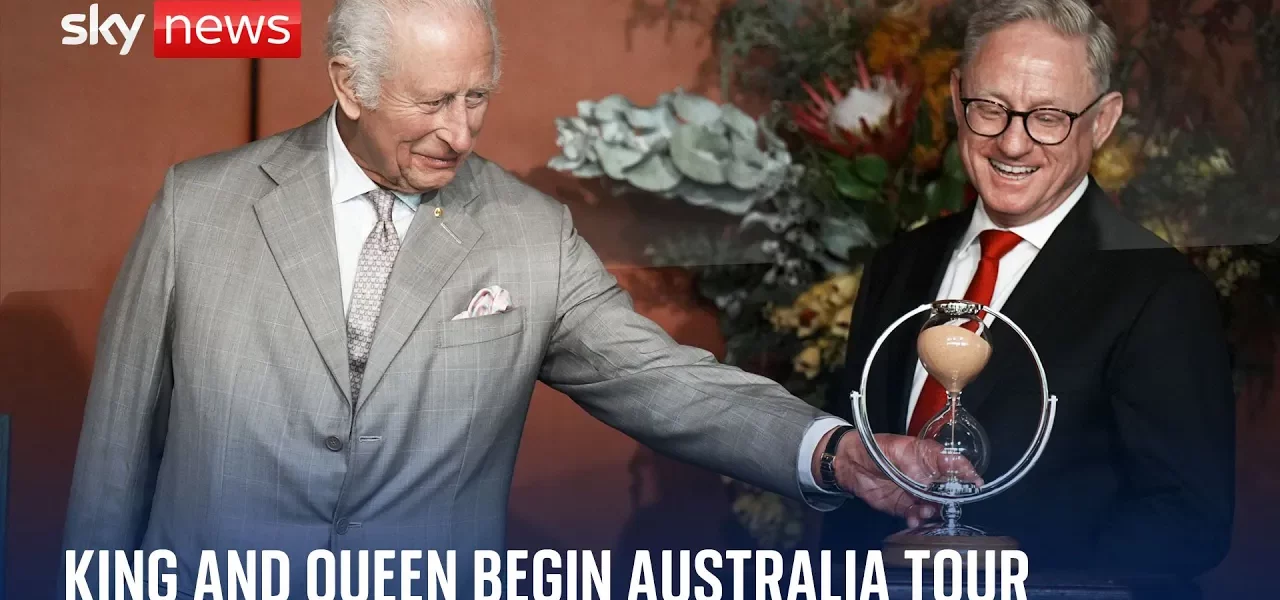King Charles III’s Visit to Australia: A Day of Engagement and Reflection

Discover the highlights of King Charles III’s first public outing in Australia, including his historic visit to St Thomas’s Church, interactions with the public, and the sentiments regarding the monarchy amidst calls for an Australian Republic.
Introduction
King Charles III’s visit to Australia marks a significant moment in the history of the monarchy and its relationship with the Australian people. Following a day of rest on his doctor’s orders, the King engaged in a series of public events that showcased both the ceremonial aspects of his role and the evolving sentiments of the Australian populace towards the monarchy. This article delves into the details of his engagements, public interactions, and the atmosphere surrounding this royal visit, highlighting the complex dynamics of tradition, modernity, and national identity.
Engagements at St Thomas’s Church
The King’s Sunday in Sydney began with a service at St Thomas’s Church, the oldest church in the area. This historic venue holds deep significance as it represents the longstanding connection between the monarchy and the Australian people.
Signing the Historic Bible
During his visit, King Charles III signed a historic Bible, a moment rich with symbolism as it echoed a similar event from 1983 when he signed it alongside his late mother, Princess Diana. This act not only reflects his commitment to the role of the monarchy but also serves as a bridge between past and present, honoring the legacy of his family.
Public Interactions: Meeting the People
One of the highlights of the King’s visit was his interaction with the Australian public. This occasion allowed citizens to meet their King, although it was noted that locals should refrain from calling it a ‘walkabout’—a term with distinct connotations in Australia.
Personal Encounters
Amidst the crowd, a visitor managed to engage the King directly, expressing appreciation for his leadership. The King’s response was warm and personable, illustrating his approachability:
- “You’re doing a good job, Charles,” a member of the public remarked.
- The King responded, “Thank you,” making eye contact that left a memorable impression.
Symbolic Gifts
In a light-hearted moment, the visitor presented the King with a picture of a kangaroo, symbolizing the Australian spirit and affection for wildlife. Such exchanges highlight the personal connection and affection Australians have towards their monarch.
The Sentiment Towards the Monarchy
While the visit was largely celebratory, it also coincided with ongoing discussions about the future of the monarchy in Australia. The Australian Republic Movement was present, albeit in a less confrontational manner than previous protests, choosing to gather in a bar to share their message and merchandise.
Arguments for a Republic
Supporters of the Republic movement have articulated several key arguments against the monarchy:
- Full representation: Advocates argue that a head of state should be a native-born citizen who epitomizes national identity.
- Unquestionable allegiance: There is a sentiment that a head of state must have unwavering loyalty to the country.
- Full-time commitment: Critics point out that the monarch’s role is part-time, raising questions about dedication to Australian interests.
Reflections on the Royal Visit
As King Charles III’s visit progressed, he addressed the New South Wales Parliament, celebrating its bicentenary. His address reflected his long-standing affection for Australia and its people, emphasizing the joy of his first visit as Sovereign:
“What a great joy it is to come to Australia for the first time as Sovereign and to renew a love of this country and its people which I have cherished for so long.”
This sentiment resonates with many Australians, yet the juxtaposition of his visit with calls for a republic continues to stir debate among citizens.
Conclusion
King Charles III’s visit to Australia has been a momentous occasion, combining ceremonial duties with genuine interactions that reflect the complexities of the monarchy’s role in modern Australia. While many embrace the traditions and connections to the royal family, the undercurrents of republican sentiment remind us that the conversation about Australia’s national identity is ongoing.
As citizens reflect on the future of their nation, it is crucial to engage in discussions about the monarchy’s relevance and the possibility of a republic. For more insights into the monarchy and its influence in Australia, explore our related articles on royal engagements and the history of the Australian Republic Movement.
“`




